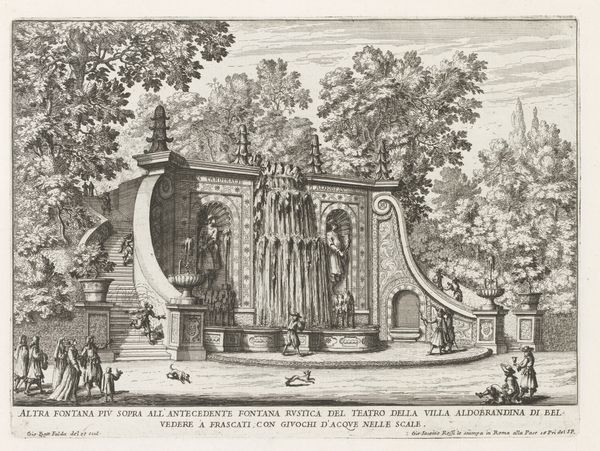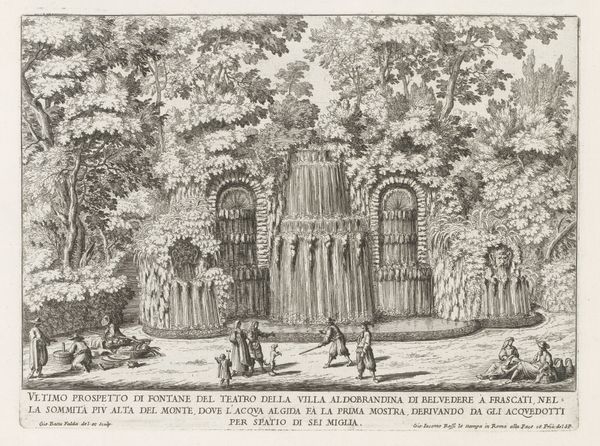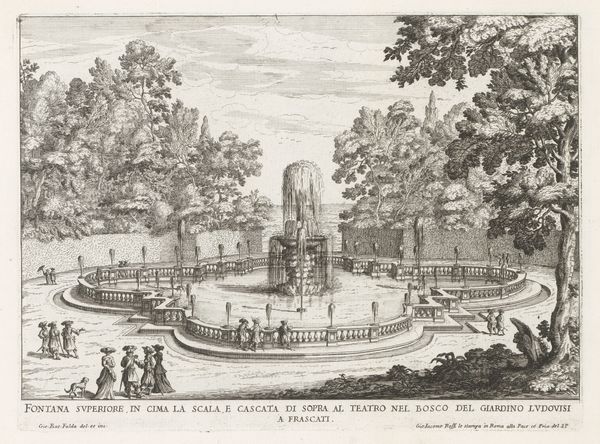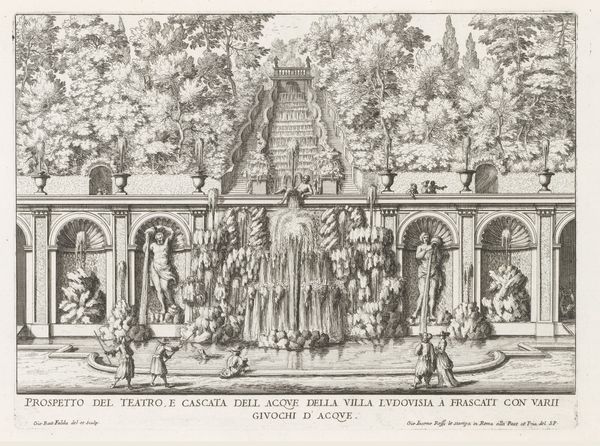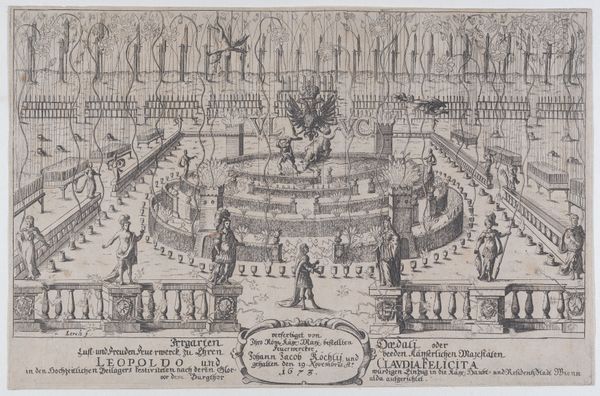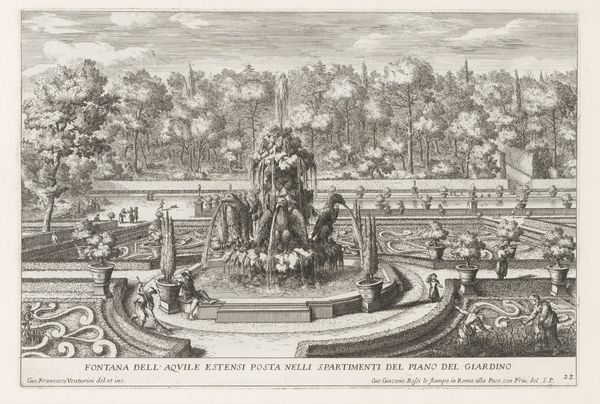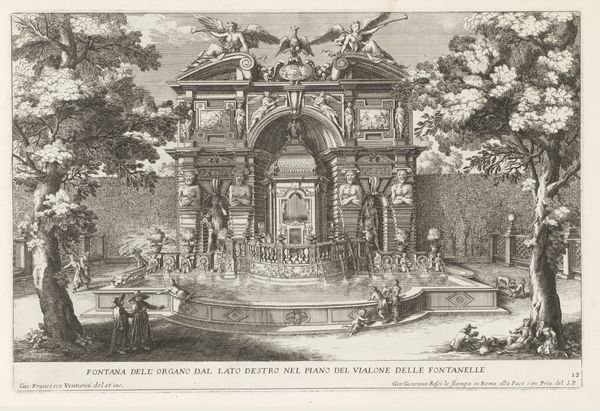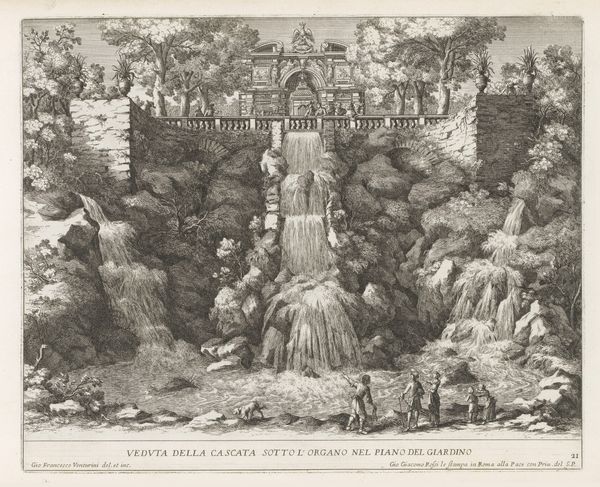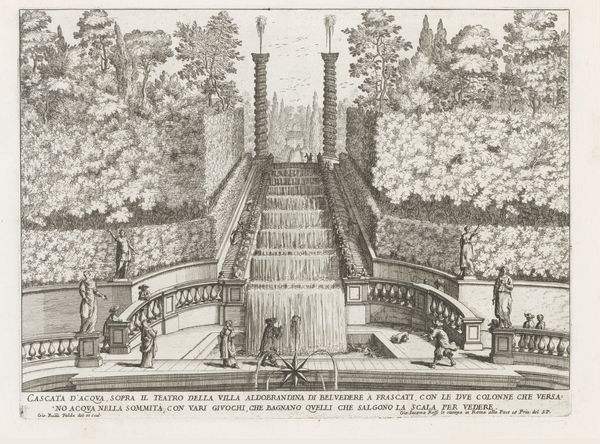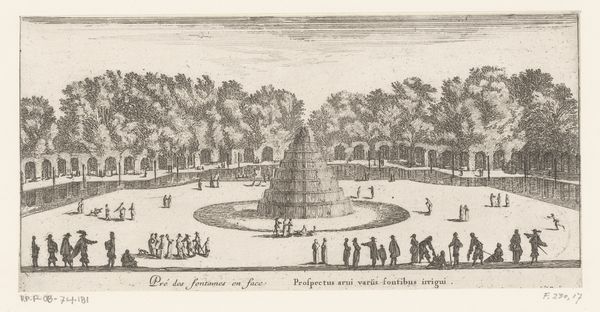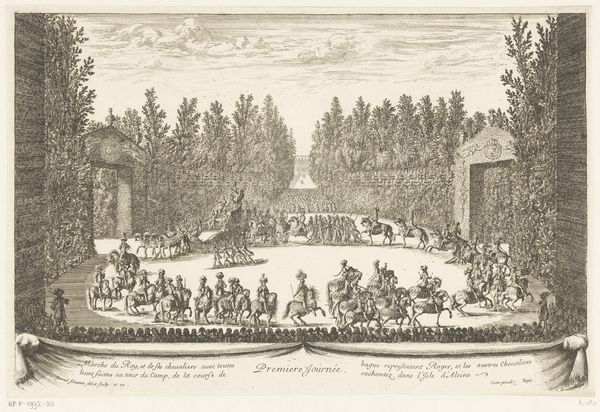
print, engraving
#
baroque
# print
#
landscape
#
engraving
Dimensions: height 218 mm, width 307 mm
Copyright: Rijks Museum: Open Domain
Editor: So, this engraving is called "Fontana dell'Aquilone in de Vaticaanse tuinen," made sometime between 1653 and 1691 by Giovanni Francesco Venturini. It depicts a rather theatrical fountain scene. I’m curious about the purpose behind representing something like this as a print. What social role did images of elaborate fountains play? Curator: That's a fantastic question! Prints like this, particularly during the Baroque period, weren't simply aesthetic objects. They served as vital documents and propagators of power. Consider the Vatican Gardens – a space designed to impress and showcase the Papacy's wealth and sophisticated taste. Prints made these gardens accessible, in a way, to a wider, international audience. They reinforced the cultural authority of Rome. Editor: So, these weren't just postcards but strategic political tools? Curator: Precisely. Think of it as controlled dissemination of an idealized image. The level of detail, the figures casually enjoying the spectacle… It’s all carefully constructed to project a particular message about papal power and its engagement with arts and sciences. Did such imagery influence garden design throughout Europe, for example? Editor: That’s fascinating. It frames the artwork as not just beautiful, but purposeful, reflecting a whole system of patronage and cultural influence. I always thought prints were about mass production, but this makes me think about them as careful marketing campaigns. Curator: Exactly! The act of creating, distributing, and consuming prints had very significant political and social functions that need exploring. Editor: Well, now I’ll see prints from that era in a totally different light. Thanks!
Comments
No comments
Be the first to comment and join the conversation on the ultimate creative platform.
